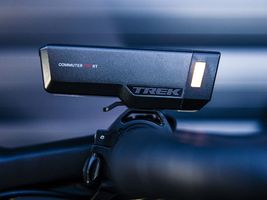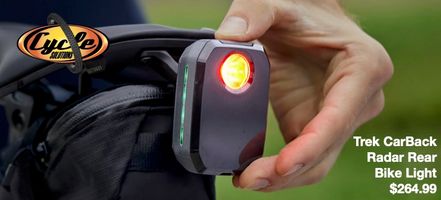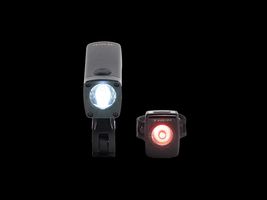LIGHTS
If you're in need of bike lights for night riding, there are several types of lights that will improve both your visibility and safety on the road or trail. Here are some key options and features to consider when choosing bike lights:

Front Lights (Head Lights)
Front lights are crucial for seeing the road or trail ahead of you when riding at night. They help you navigate through low-light conditions and make you visible to oncoming traffic. Lumens: The brightness of a front light is measured in lumens. A general guideline: 200-300 lumens for city commuting (will be sufficient to see the road and for others to see you). 500-1000 lumens for road cycling at night or when riding in areas with little ambient light. 1000+ lumens for trail or mountain biking, where you'll need a brighter, longer-reaching beam to spot obstacles. Beam Pattern: Some front lights have a wide, flood-style beam for seeing a large area around you, while others have a focused spot beam for distance. Consider the type of riding you'll do when choosing the beam pattern. Features to Look For: Rechargeable batteries (USB charging). Multiple brightness settings or flash modes. Daytime visibility: Some front lights are designed to be visible even in daylight. Waterproofing: If you ride in rain or wet conditions, look for a light that’s water-resistant or fully waterproof (IPX4 or higher).

Rear Bike Lights (Tail Lights)
Rear lights are vital for making you visible to traffic from behind. They don't need to be as bright as front lights but should still provide good visibility for drivers and other cyclists. Lumens: Rear lights typically range from 10 to 100 lumens. Anything in the 50-100 lumen range will make you clearly visible during night or low-light conditions. Flash Modes: Many rear lights come with multiple flash modes (steady, pulse, strobe) to catch the attention of drivers and pedestrians. Mounting: Most rear lights mount on the seat post, but some models offer versatility with belt clips or mounts that attach to a backpack or helmet. Features to Look For: Rechargeable batteries (USB charging). Multiple brightness settings or flash modes. Daytime visibility: Some front lights, like the Cygolite Hotshot or NiteRider Lumina, are designed to be visible even in daylight. Waterproofing: If you ride in rain or wet conditions, look for a light that’s water-resistant or fully waterproof (IPX4 or higher).


